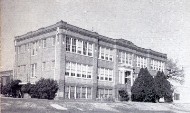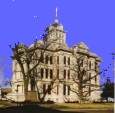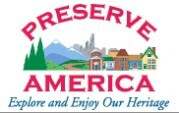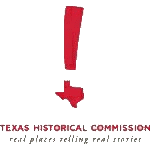Milam County Historical Commission
Milam County, Texas
All credit for these articles go to
Susie Sansom-Piper and
the Rockdale Reporter
Milam County, Texas
All credit for these articles go to
Susie Sansom-Piper and
the Rockdale Reporter






Somewhere in the distance you could hear the little “Dinky” passenger train whistle blowing as the
train traveled its usual route between Waco and La Grange.
In Rockdale this meant it was either 9 a.m. to 4:30 p.m. It was a timepiece for many who lived near
today’s FM 487 or White Street.
Rockdale’s blacks during this period were very proud of their origin, their performances and their
contributions. Even in the early 1900s ambition was evident as many families struggled to send
their children to Paul Quinn College (Waco) or to Prairie View Normal & Industrial College.
Many parents sent their children to beauty or barber schools. Many became teachers, telephone
operators, beauticians, barbers or operated small businesses.
Most of the people during this time were home owners. Homes were heated by tin or iron heaters that
turned coal or wood. These were usually located in a central room which usually served as a family
sitting room and a bedroom.
Outhouse, coal oil light
Restroom facilities consisted of a wash basin, No. 3 tub for bathing and an outhouse. A coal oil
lamp furnished light during the night.
When the mid-1940s arrived, electricity and sewage became available to all.
There were very few automobiles, few buggies or wagons, but the lack of conveniences did not deter
people from going to their jobs as janitors or maids and from attending church functions on Sundays
and during the week.
Walking was a way of life so, regardless of the distance or time required, we walked!
There were many little grocery stores scattered about in the various sections of the community.
“The Flat” boasted three stores on the same street.
Speedyville was accommodated by the Menn store and Williams grocery store.
The Menn store was located on the spot where city maintenance equipment is kept and the Williams
store was a half-block away on the corner of what is now Boga Street.
Ghost dog
McVoy Grocery was very accommodating to black citizens during this time for many could purchase
groceries on credit and pay later. It was the oldest operating grocery store in the downtown area.
Many legends remain from those times. It was said, on certain nights, you did not dare to walk
between the streets where the Dinky tracks and Menn’s store were located. There was supposed to be
a ghost, in the form of a black dog, that frightened those who encountered him.
There was also a trail in the Old City Cemetery used as a short cut for children attending the
nearby Aycock school. They didn’t mind using it during the day but would not venture into the
cemetery at night.
“We see ghosts walking around the cemetery,” the children would say.
Water tower
At the main entrance to the cemetery a water tower once stood. Its foundation is still
there. Children were afraid to venture near this tower because they thought it was
leaning and would fall on them.
The tower was a source of water for the community. Most families had barrels and would
haul their water from the tower, as water lines did not yet exist, or kept a barrel at a
corner of the house to catch rain water.
A grist mill once stood in the center of the street near the water tower. People took
dried corn ears and would have the corn ground into meal for cornbread.
Many early black Rockdale settlers are buried in the southern end of the cemetery.
During these years no one really had beautiful green lawns and elaborate shrubbery but
managed to keep “well swept” yards and in the spring and summer planted Zinnas around
their porches.
There was a neighborhood bond where everyone would share food or clothing, correct one
another’s children or report their misbehavior to their parents.
ON THE OTHER SIDE OF THE TRACKS, PART 1
1874-1940s: Community bonds, ghost dogs
by Susie Sansom-Piper
Rockdale Reporter - February 5, 2009
Piper checks out circular brick
base of long-gone water tower at
entrance to Old City Cemetery.
.
Photos by Mike Brown
Piper and grandson
Jerome Hebert visit site
of former McVoy Grocery,
a business that still
bears the McVoy name.

